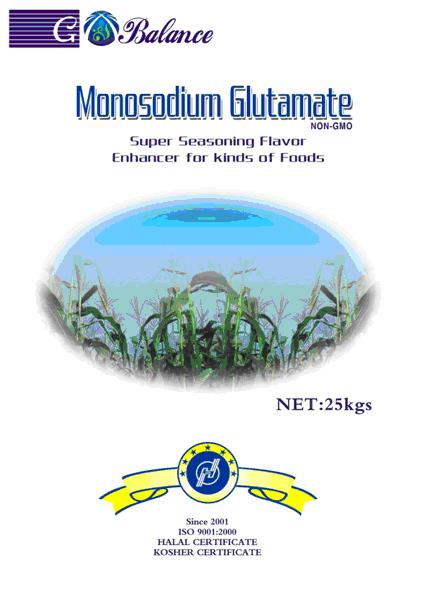Get your MSG on, then throw up...
MSG is manufactured through a process of protein hydrolysis.

When protein hydrolysis yields a product that is 99% free glutamate
(glutamate separated from the protein in which it was originally found), the product is called "monosodium glutamate" ("MSG") by the FDA and must be labeled as such.
When a protein hydrolysate consists of less than 99% free glutamate, the product is called one of a variety of names including "sodium caseinate," "calcium caseinate," "autolyzed yeast," "textured protein," "yeast food," "hydrolyzed vegetable protein," and "hydrolyzed protein." All these products contain MSG. Typically, the amount of free glutamate in these products ranges between 8 and 40 per cent.
The FDA points out that all of these hydrolyzed protein products
occur naturally; but unlike the
is 99% or more free glutamate and is required by FDA regulation to identify its MSG content with the words "monosodium glutamate," under present regulations, the other hydrolyzed proteins do not have to mention that they contain MSG. On any given day, a new product may enter the market, and a new source of MSG may be at hand. Names that can be used to signify a hydrolyzed protein appear not to be subject to any restrictions.
But that's not the half of it. Under FDA regulation, hydrolyzed protein may be included in various products with no mention of the hydrolyzed protein. The information we have at this time tells us that broth, bouillon, stock, flavoring, natural flavoring, natural flavors, and a whole host of products called natural chicken flavoring, natural turkey flavoring, etc. contain MSG
 insinuated into the product through the use of some form of hydrolyzed protein. So MSG sensitive people who know about the hiding of MSG are afraid to eat any product that has "flavoring" or "natural flavoring" in it, for example, even though it might be MSG-free. As a result, the grocery shelf, the refrigerator, and the freezer case, contain very little that a sensitive person can be sure is free of MSG. Further, the amount of MSG found in food today is growing. It is found in most soups, salad dressings, and processed meats; in some crackers, bread, canned tuna fish, most frozen entrees, ice cream, and frozen yogurt. Lately we've seen it included in the new "low fat" foods. That makes sense because if you remove the flavor provided by the fat, you have to put back the flavor, and that, some say, calls for MSG.
insinuated into the product through the use of some form of hydrolyzed protein. So MSG sensitive people who know about the hiding of MSG are afraid to eat any product that has "flavoring" or "natural flavoring" in it, for example, even though it might be MSG-free. As a result, the grocery shelf, the refrigerator, and the freezer case, contain very little that a sensitive person can be sure is free of MSG. Further, the amount of MSG found in food today is growing. It is found in most soups, salad dressings, and processed meats; in some crackers, bread, canned tuna fish, most frozen entrees, ice cream, and frozen yogurt. Lately we've seen it included in the new "low fat" foods. That makes sense because if you remove the flavor provided by the fat, you have to put back the flavor, and that, some say, calls for MSG.This hiding of MSG has a second consequence, much more insidious than forcing MSG-sensitive people to limit their diets. Hiding MSG makes recognition of MSG so complex and confusing that people who are sensitive to MSG have a great deal of difficulty realizing it. Think about it. If you eat something with MSG in it, and you have a bad reaction, you might think at first that you are sensitive to MSG. But then you eat something that does not say MSG anywhere on the label and you have that same reaction. "Obviously," you conclude, "it is something else to which I am sensitive, not MSG." Not until you recognize all of the hidden sources of MSG will you be able to make a proper evaluation of what is causing your reaction.
Just as MSG in food is presently identified some times and not others, the FDA has proposed a regulation that the glutamate in "certain" hydrolyzed proteins should be disclosed. The proposed regulation as published in the January 6, 1993 Federal Register does not make clear what "certain" means. To the consumer, however, "certain" means that MSG will continue to be hidden in food.
Following the August 31, 1995 release of a report on the safety of MSG done for the FDA by the Federation of American Societies for Experimental Biology (FASEB), FDA Commissioner David A. Kessler, M.D., J.D., reiterated the need to label "significant" amounts of MSG. "Significant" means that MSG will continue to be hidden in food.







0 Comments:
Post a Comment
<< Home